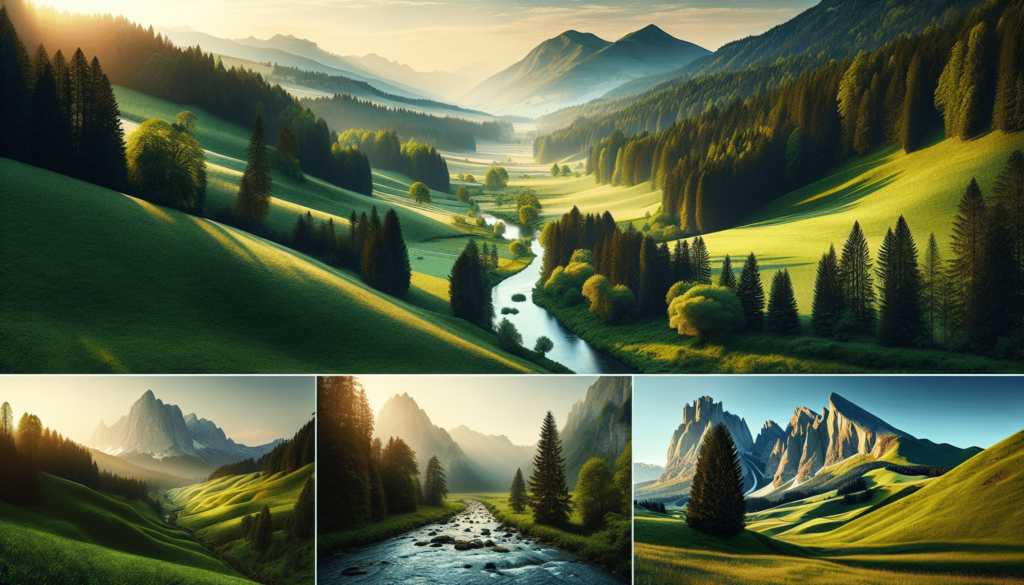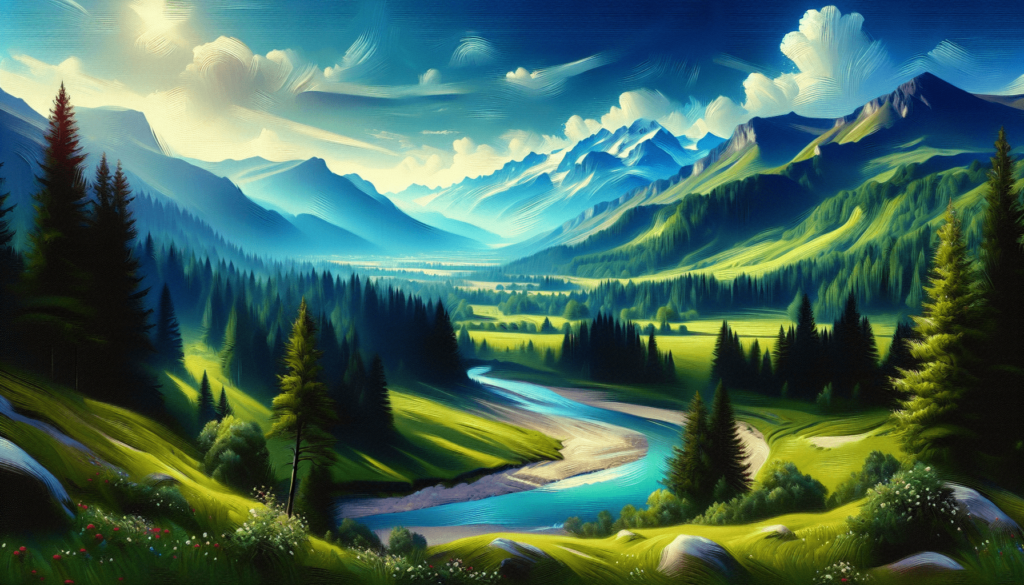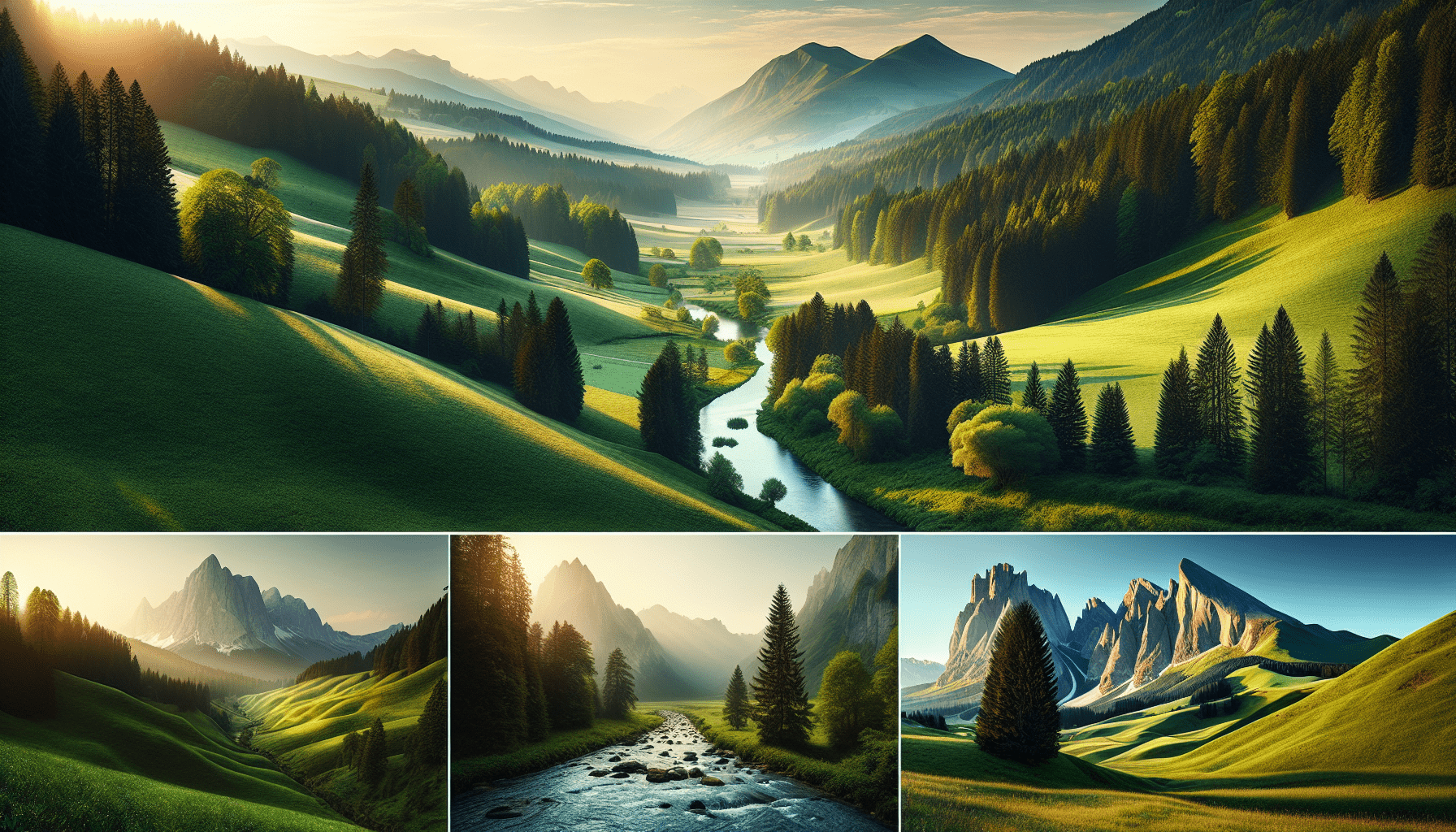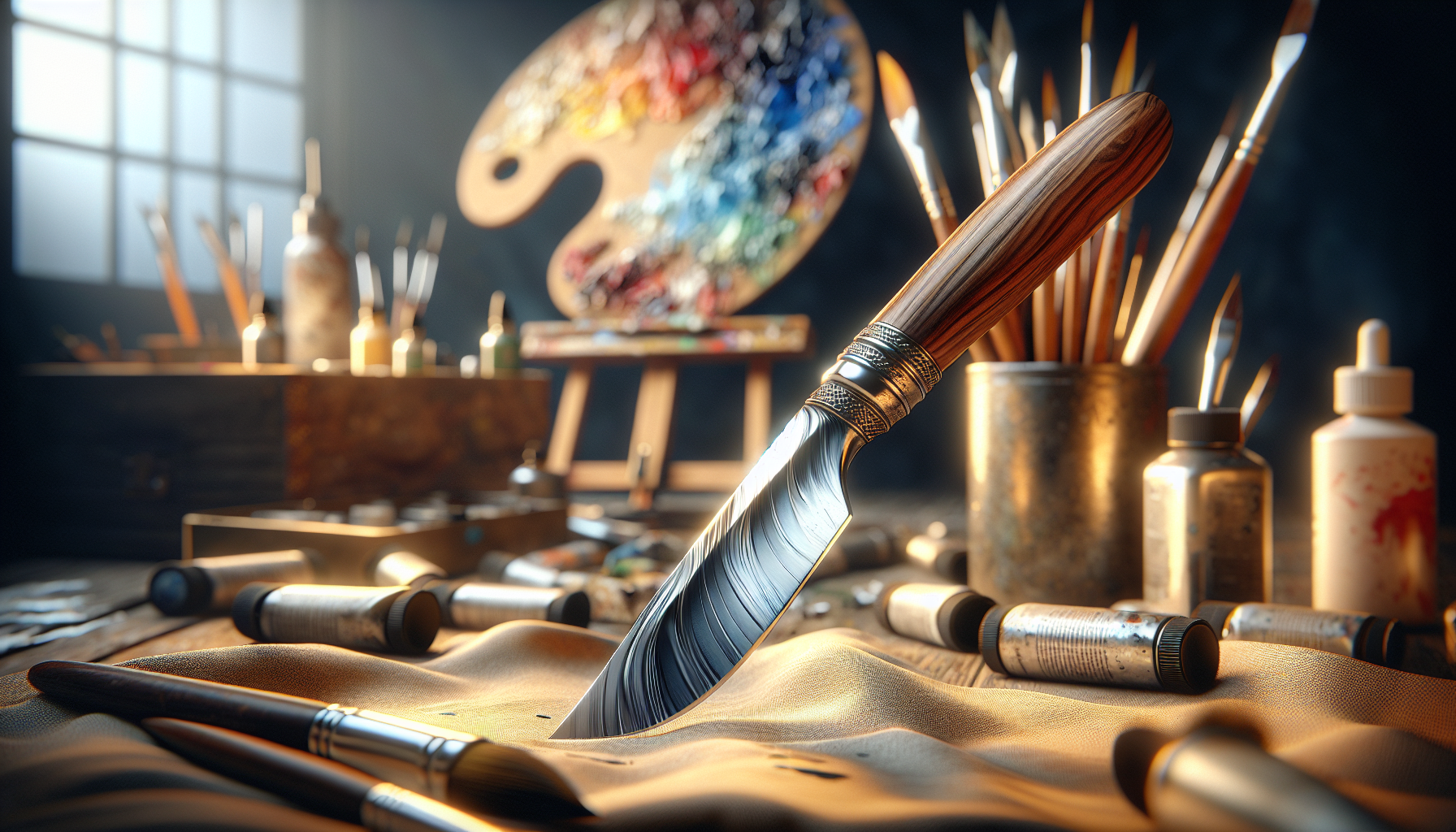What makes landscape painting a celebrated genre in the art world? This question invites us to explore the essence of landscape painting, its historical significance, various techniques, and its evolution over time. Landscape painting is a genre that captures the natural environment, often reflecting the artist’s interpretation of the outdoors—whether it be vast mountains, tranquil seashores, or bustling cityscapes.
Understanding Landscape Painting
Landscape painting is the depiction of natural scenery in art. These paintings typically focus on wide, scenic views, which may include elements such as mountains, valleys, trees, rivers, and forests, as well as atmospheric elements like sky, clouds, and light. This genre is not only about accurately depicting a scene but also about expressing the mood and atmosphere of the environment. Historical and contemporary artists have developed various methods to capture nature’s beauty, each bringing a distinct perspective that adds to the richness of this art form.
Historical Context of Landscape Painting
Throughout history, landscape painting has evolved significantly. In the early periods, landscapes were often mere backdrops for human activity. It was not until the Renaissance that artists began to pay more attention to the detailed rendering of natural environments, with painters like Leonardo da Vinci taking an interest in capturing nature realistically.
During the 17th century, the Dutch Golden Age of painting established landscape as a genre in its own right. Artists like Jacob van Ruisdael and Aelbert Cuyp specialized in this genre, creating detailed and dynamic representations of the Dutch countryside. In England, the 18th and 19th centuries saw the rise of Romantic landscape painters, such as J.M.W. Turner and John Constable, who emphasized dramatic skies and emotional expression in their works.
Techniques in Landscape Painting
Various techniques are employed in landscape painting to achieve different effects:
-
Impressionism: This technique focuses on capturing the impression of a scene rather than an exact reproduction. Brushwork is often loose, and colors are vibrant, aiming to emulate natural light. Artists like Claude Monet used this approach to convey the transient effects of light on landscapes.
-
Photorealism: This style aims to achieve a high level of detail and precision, almost like a photograph. While less common in landscape painting, photorealism can highlight the intricate details of natural scenery.
-
Abstract Landscape: Some artists take inspiration from nature but do not represent it literally. Instead, they interpret the landscape using shapes, colors, and forms that convey the emotions or ideas provoked by the environment.
-
Plein Air: French for “open air,” this technique involves painting outdoors to capture the true essence of the landscape, making use of natural light and immediate observation.
-
Tonalism: This technique emphasizes atmosphere and mood, often using a palette dominated by grays, browns, and muted colors to evoke tranquility and subtlety.
Elements of Landscape Painting
Several key elements come together to create a successful landscape painting:
-
Composition: The arrangement of elements within the painting is crucial. Artists often use techniques such as the rule of thirds or leading lines to guide the viewer’s eye across the work.
-
Light and Shadow: The depiction of light and shadow adds depth and dimension. Understanding how light interacts with natural forms helps to create realistic and engaging scenery.
-
Color: Color selection can influence mood and atmosphere. Warm colors may evoke a sense of energy, while cool colors might suggest calmness.
-
Perspective: Creating depth is essential in landscape painting, which can be achieved through techniques like linear perspective, where parallel lines converge at a vanishing point, and atmospheric perspective, which uses color to create an illusion of distance.
The Evolution and Influence of Landscape Painting
The Romantic Movement
The Romantic Movement of the late 18th to mid-19th centuries marked a pivotal moment in the evolution of landscape painting. This movement was characterized by an emphasis on emotion, individuality, and nature’s grandeur. Landscape artists, particularly those from the Romantic era, sought to capture the sublime beauty and power of nature, often presenting it in stark contrast to human frailty. This era produced awe-inspiring works that celebrated dramatic weather, imposing mountains, and turbulent seas.
The Impact of Impressionism
Impressionism further transformed landscape painting during the late 19th century. Artists like Claude Monet and Pierre-Auguste Renoir shifted their focus to the play of light and color, creating works that convey the immediacy of a moment in time. These artists often painted en plein air, which allowed them to experience and capture the natural world in a spontaneous and vibrant manner. The use of short, broken brushstrokes and a bright, varied palette became hallmarks of this influential movement.
The American Landscape Tradition
In America, landscape painting found a voice through the Hudson River School in the mid-19th century. Artists such as Thomas Cole and Albert Bierstadt created expansive vistas that celebrated the unique and bountiful American scenery. These paintings often carried a sense of national pride and exploration. The transcendentalists, including Ralph Waldo Emerson and Henry David Thoreau, influenced these artists by promoting a profound connection between humanity and nature.
Modern and Contemporary Trends
Today, landscape painting continues to evolve, incorporating new technologies and ideas. Modern and contemporary artists may use digital tools, innovative materials, or cross-disciplinary approaches to explore environmental themes, sustainability, and even the impact of climate change on natural landscapes. The genre remains versatile, allowing artists to communicate both traditional beauty and contemporary issues.

The Cultural and Symbolic Significance of Landscape Painting
National Identity and Landscape
Landscape paintings have often been used to evoke a sense of national identity and pride. The depiction of iconic landscapes can symbolize a nation’s cultural heritage and natural resources. For example, American landscape paintings from the Hudson River School often depicted the nation’s vast wilderness, emphasizing a spirit of exploration and expansion. Similarly, Chinese landscape paintings, known as shan shui, have long been associated with philosophical ideas and the relationship between humanity and nature.
Spiritual and Emotional Resonance
Landscape painting can also convey spiritual and emotional connections to the natural world. Many cultures see landscapes as imbued with spiritual significance. Artists often seek to capture this essence in their works, whether by depicting sacred sites, such as Japan’s Mount Fuji, or by channeling the powerful emotions elicited by a majestic sunset or a stormy sea. These paintings can offer viewers a sense of peace, wonder, or contemplation.
Landscapes as Metaphor
Artists frequently utilize landscapes as metaphors for broader themes, such as the passage of time, the cycle of life, and the human experience. A ravaged landscape, for instance, might symbolize loss or destruction, while a verdant and thriving scene could represent growth and renewal. By engaging with these metaphors, viewers are encouraged to contemplate the interconnectedness of nature and humanity.
The Role of Technology and Innovation in Landscape Painting
Digital Painting
In the modern era, technology has revolutionized the way artists approach landscape painting. Digital painting software allows artists to simulate traditional painting techniques and create digital landscapes with ease. This medium offers unparalleled flexibility and the ability to experiment without the limitations of physical materials. Digital landscapes can be static or dynamic, incorporating elements such as animations or interactivity to engage viewers in innovative ways.
Virtual Reality and Augmented Reality
Virtual reality (VR) and augmented reality (AR) technologies have opened new avenues for landscape artists. VR allows viewers to “step into” a painted landscape and experience it in a 360-degree environment, creating an immersive experience. AR can blend the real world with digital landscapes, offering an interactive and engaging way to explore the interaction between digital and physical spaces.
Environmental Art and Installations
Beyond traditional paintings, landscape art now includes installations and site-specific works that engage with the environment directly. Artists like Christo and Jeanne-Claude have created large-scale outdoor installations that alter perceptions of familiar landscapes. These works encourage viewers to consider the relationships between art, nature, and human intervention.

Conclusion
Landscape painting is a dynamic and enduring genre that captures the beauty and complexity of the natural world. From its historical roots in the Renaissance to its continued evolution in contemporary art, landscape painting offers varied techniques and styles that reflect cultural identities, emotional resonances, and technological advancements. As artists continue to explore new methods and mediums, landscape painting remains a vital means of expression, capable of inspiring awe, contemplation, and discussion in equal measure.
As you consider the landscape paintings that surround you, whether in galleries, homes, or digital spaces, contemplate their significance—not only as representations of natural scenes but also as reflections of broader cultural, emotional, and technological narratives. Landscape painting invites you to engage with the world in a meaningful and profound way, offering insights into both the environment around you and the human condition.



